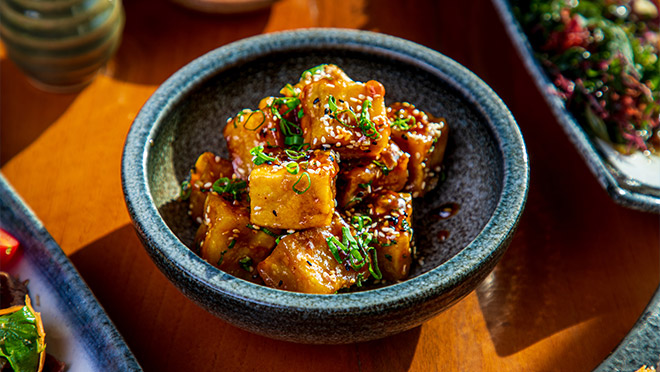Safe, efficient, delicious: B.C. chefs embrace induction cooking
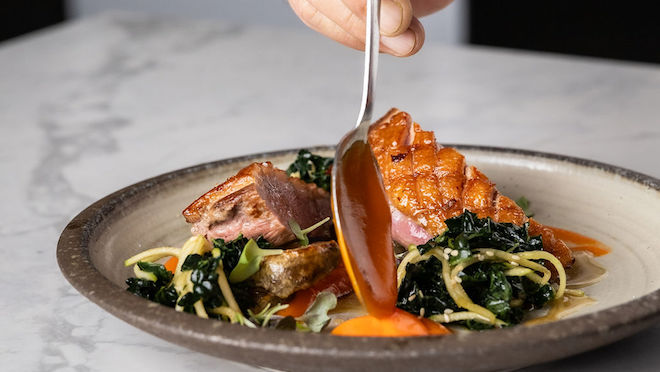
Digital book features chefs' favourite induction-friendly recipes
Precise. Lightning fast. Climate-friendly. Safe.
Ken Nakano counts himself as a huge fan of induction cooking, in part because work life is cooler and quieter in an all-electric restaurant kitchen. There's no heat rising from gas-powered flames, no metal-on-metal clanging of pans.
But above all, it's the performance of an induction cooktop, the ability to fine-tune heat, that has made the Executive Chef at Victoria's Inn at Laurel Point's Aura Restaurant + Patio a convert from cooking with gas. He's one of five B.C. chefs to team up with B2E (Building to Electrification) to show home cooks how safe, efficient and delicious it is to make the switch to induction cooking.
Those five chefs have each picked a recipe to showcase in a downloadable digital recipe book – Induction Eats: Kitchen Inspirations from Five Gourmet Chefs – that's now available. And his choice of recipe, Yarrow Meadows Duck Breast with Sunchokes + Carrots and a Kale Honey Miso, is particularly suited to induction cooking.
"I love this duck breast from Fraser Valley Specialty Poultry, and it's always a top seller in Aura," says Nakano, who joined Aura's all-electric kitchen in 2020. "The induction element gently renders the fat and creates the perfect crispy skin and doneness."
Joining Nakano for the induction recipe initiative are Angus An (Maenam, Fat Mao); Claire Lassam (Livia Sweets); Michael Varga (Vancouver Firefighter Charities' "Fire in Your Kitchen," and Chopped Canada contestant); and Ying Ying Gao (Riley's Steak and Fish). Recipes in the digital recipe book include:
- Potato Gnocchi and Confit Tomato Sauce
- Chiang Mai Curried Chicken and Noodle Soup
- arrow Meadows Duck Breast with Sunchokes + Carrots and a Kale Honey Miso
- Salt Baked Cornish Hen with Arugula Salad
- Chocolate Budino with Sesame Brittle
"I have long loved the precise temperature control you get through induction, so much so that it's what we use at the restaurant," says Livia Sweets chef Lassam, who offered his Chocolate Budino and Sesame Brittle recipe to the mix. "It's the perfect thing for savoury applications, like frying, and for finicky pastry items, like custards and jams. Baking is about control, and induction gives me that."
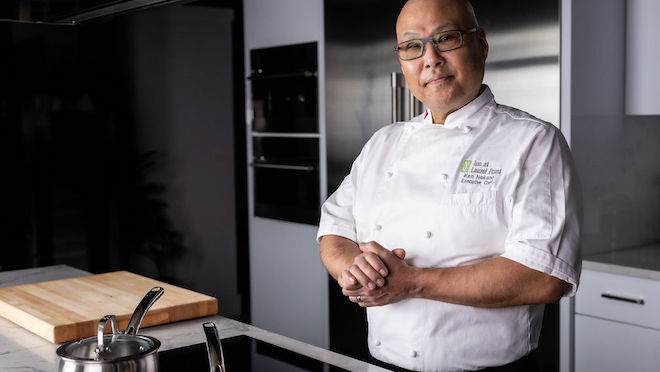
Enter to win, and save up to 20% on an induction cooktop
Until June 24, British Columbians can enter to win a Blomberg induction range or additional prize that include a Duxtop Portable Induction Cooktop package.
Midland Appliances, one of the partners in the B2E initiative, is also offering a limited-time in-store rebate of up to 20% on qualifying induction cooking appliances. Also supporting B2E are BC Hydro, the City of Vancouver and the City of Victoria.
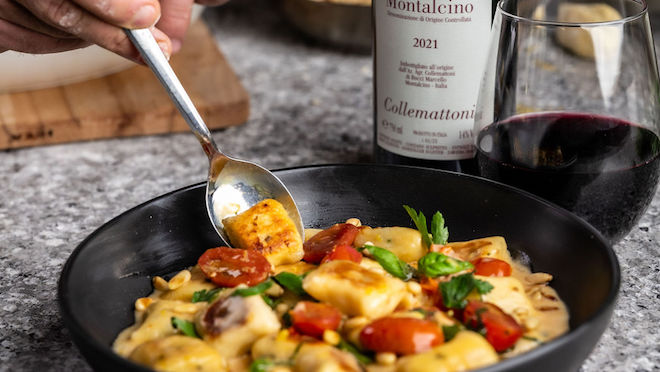
Induction cooking 101
Induction cooktops use an electric current passed through a coiled copper wire underneath the cooking surface to create a magnetic current throughout the cooking pan to produce heat. It's extremely efficient, allows for instant adjustment in temperature, and the stove top itself is much safer because only the pan, and not the cooktop, heats up.
Cooking at low heat levels is tricky with gas ranges, and Nakano grew up in a household where rice was a go-to for his family but was difficult to cook on a gas range. He says the family engineered a kind of grill out of coat hangers that was placed on a gas element to ensure a lower cooking temperature.
"It's the same thing as with duck breast, which I've been cooking for decades," he says. "With gas cooking, low temperature items need more steps to control the doneness. With induction, we just put it into a cold pan and bring it up to temperature, and come back in about eight minutes to very consistent results. You don't want to cook the skin too quickly or the fat, between the skin and the meat, won't render properly, leaving it flabby and not pleasant to eat.
"With gas, you're moving the pan off and on the fire trying to regulate temperature while doing 100 other things during restaurant service."
When asked if the generally higher cost of induction cooktops might dissuade some from making the switch, he suggests adding an auxiliary single induction burner. He says it's also good for small rental suites and other places where space for a full range might not be available. To see how effective this can be, check out popular YouTube and TikTok food star Jon Kung, who showcases a single induction burner.
Chef Michael Varga thinks home cooks will enjoy the experience as much as he does.
"I'm a big fan of induction cooking," he says. "The precision and even heating is next level. Even better: the induction surface stays cool for when my kids are cooking with me."
The list of induction cooking benefits is long and includes:
- Enhanced safety: In induction cooking, the heat is created within the cookware instead of on the element. When the pan is removed or the cooktop is turned off, the heat transfer ceases immediately meaning the surface is warm to the touch.
- Enhanced health: A peer-reviewed Australia and U.S. study released in 2023 links the products of combustion to an increase in childhood asthma, and a Canadian study echoed some, but not all, of those findings. The Canadian Gas Association, in its gas cooking safety sheet [PDF, 89.5 KB], is warning users of gas stoves to ensure they're always using a properly-vented hooded fan above their stovetop, and they also recommend to use the stove's back burners where more products of combustion are captured and exhausted than from the front burners.
- More climate friendly: Induction cooktops use electricity without creating and sending combustion products into the atmosphere.
- Precision cooking: The science behind induction enables even heat transfer and heat distribution to the cooking pan, meaning a more controlled and precise cook-time. With induction cooktops, up to 90 percent of energy consumed is transferred to the food, compared to about 70 to 75 percent for traditional electric cooktops and as low as 40 percent for gas cooktops.
- Easy to clean: The smooth glass of induction cooktops stays cool, so spills and debris don't have the opportunity to burn or stick to the cooktop, making post-cooking clean-up much easier.
"An induction cooktop is akin to washing a window – a flat sheet of ceramic glass – whereas a gas cooktop took me forever to clean with all the nooks and crannies around the grates and burners," says BC Hydro engineer Gary Hamer, who switched years ago to induction cooking for a number of reasons.
Hamer says gas stoves are inefficient at heating the contents of a pot because so much heat is lost around the pot and into the room. And while all cooking creates pollutants that should be vented by a fan, the combustion in burning gas creates particularly harmful pollutants including carbon dioxide, which is a greenhouse gas, and nitrogen oxide which is harmful to our breathing.
"Induction cooktops have busted the myth that serious chefs only cook with gas because they want instant heat," says Hamer. "Induction cooktops can provide instant temperature control, and are safer because they heat food that's in contact with the metal of the pot rather than transferring the heat from the burner to the pot like gas stoves or conventional coil or radiant cooktops do."
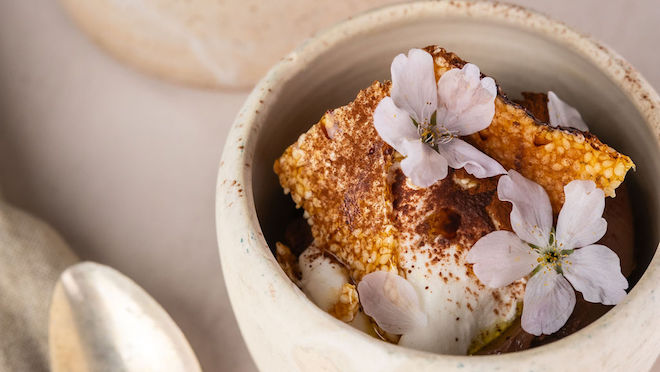
Two forces behind induction cooking in B.C.
The Zero Emissions Innovation Centre (ZEIC) is an independent non-profit and charitable organization that's part of the Low Carbon Cities Canada network established by the Government of Canada and the Federation of Canadian Municipalities. Its mandate is to catalyze, accelerate and scale climate action. It helps push innovation across Metro Vancouver related to green buildings, renewable energy and transportation through a combination of impact investing, granting, partnerships, research and capacity building.
The Building to Electrification (B2E) Coalition is a B.C.-based member-driven coalition that fosters collaboration to identify and address barriers to electrification. B2E is a convener and knowledge hub of building electrification best practices, and a key part of the Zero Emissions Innovation Centre (ZEIC).

